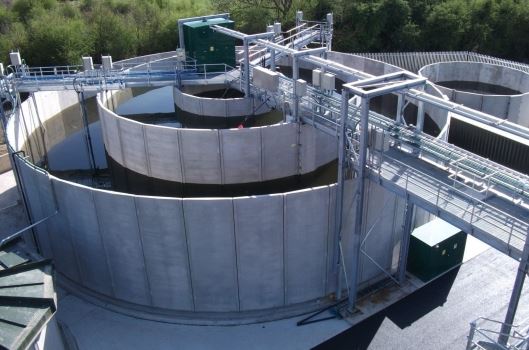🕑 Reading time: 1 minute
Wastewater treatment is the process of treating contaminated water or sewage to an effluent that can be safely dispersed back to the environment or reused for various purposes. The final product after treatment must not cause any undesirable effects on public health and the environment.
The wastewater treatment plants or systems can be classified into several types based on the type of wastewater and the treatment method. A proper understanding of the type and composition of wastewater helps to choose the right treatment method.
The article briefs some of the important types of wastewater treatment plants and their features.
Contents:
Type of Wastewater Treatment Plants
There are five types of wastewater treatment plants:
- Effluent Treatment Plant
- Sewage Treatment Plant
- Combined Effluent Treatment
- Agricultural Treatment Plant
- Leachate Treatment Plant
1. Effluent Treatment Plant
An effluent treatment plant is used in the chemical and pharmaceutical industries. The wastewater from these regions has many toxic and non-toxic chemicals that are removed in the effluent treatment plant.
Other than chemicals, the treatment removes debris, pollution, grit, and polymers. Altogether it has an important role in the protection of the environment. Hence, it is called the home of wastewater management and industrial effluents.
2. Sewage Treatment Plant
The sewage treatment plant removes the contaminants present in the household sewage water. It is also called domestic wastewater treatment plant. The sewage from industrial sources can also be combined with household sewage and treated together in the sewage treatment plant, depending on the size of the region.

Image Credits: Cleantech Water
The sewage treatment plant works based on three major phases of treatment; physical, chemical, and biological. The process starts with removing solid particles followed by the break down of dissolved nutrients and organic materials. Finally, the wastewater undergoes disinfection to remove pathogenic bacteria from it.
The treatment finally leaves behind sewage sludge which requires proper treatment and disposal in the environment. Generally, wastewater treatment companies run their own sewage plants.
3. Combined Effluent Treatment Plants (CETP)
Combined treatment plants are used by small-scale industries where it is unable to accommodate large treatment systems. CETP is employed in areas that have small-scale industrial units. The system is a low-cost option and promotes wastewater management.
4. Agricultural Wastewater Treatment Plant
Large agricultural plantations employ this type of treatment plant. These plants treat the surface runoff water polluted by chemicals from pesticides and fertilizers, irrigation water from the farm, or animal slurry.
The machines and treatment units have some resemblance to those seen in industrial or effluent treatment plants. Unlike other plants, these industries have land that can be used for settling basins, facultative lagoons, and ponds. This way, the operational costs go down.
5. Leachate Treatment Plant
Leachate treatment plants treat leachate that is drained out of landfills. Leachate has the ability to dissolve substances that are harmful to the environment.

Image Credits: A.Consult
The treatment is carried out by biological, mechanical, and reverse osmosis methods. It serves the objective to decrease the number of dangerous substances dissolved in the liquid.
FAQs
There are four major ways in which a wastewater treatment plant can work. They are:
Effluent Treatment Plant
Sewage Treatment Plant
Combined Effluent Treatment
Agricultural Treatment Plant
Leachate Treatment Plant
Combined treatment plants are used by small-scale industries where it is difficult to accommodate large treatment systems. CETP is employed in areas that have small-scale industrial units. The system is a low-cost option and promotes wastewater management.
Leachate treatment plants treat leachate that is drained out of landfills. Leachate has the ability to dissolve substances that are harmful to the environment.
The treatment is carried out by biological, mechanical, and reverse osmosis methods. The treatment serves the objective to decrease the number of dangerous substances dissolved in the liquid.
Read More

